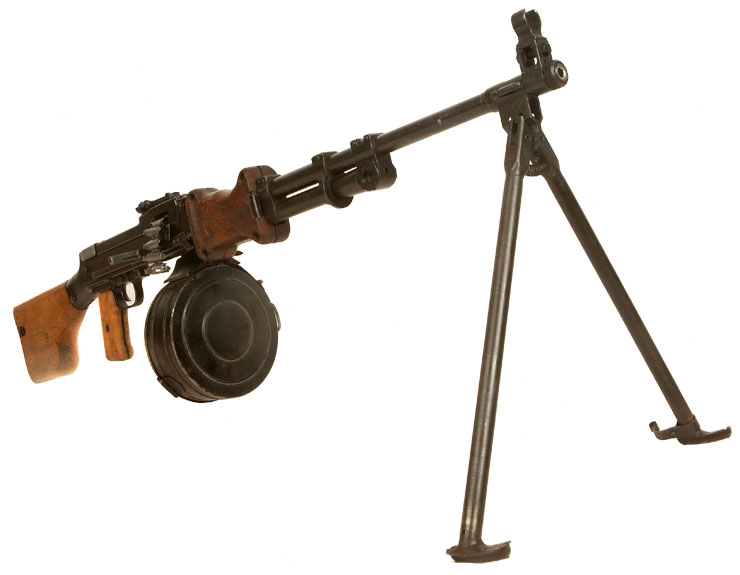

inspectors who are scouring his nation for nuclear, biological and chemical weapons. Like Stevenson during the 1962 Cuban missile crisis, Powell will be talking to several audiences this morning as he presents evidence designed to show that Iraqi President Saddam Hussein has failed to cooperate with U.N. "I didn't know that Adlai had it in him." Kennedy murmured to his aides in the Oval Office as he watched the live broadcast.
#Photo gun ussr series
I am also prepared to present the evidence in this room." After waiting for the laughter over Zorin's discomfiture to subside, Stevenson proceeded to unveil a series of poster-size black-and-white photographs putting the lie to Soviet leader Nikita Khrushchev's claim that the Soviet Union did not have offensive weapons deployed in Cuba. "I am prepared to wait for an answer until Hell freezes over, if that is your decision. Stevenson, an intellectual politician who usually shied away from confrontation, twisted the knife. You will have your answer in due course." Trying to wiggle out of the trap that Stevenson had set for him, Zorin equivocated.

The Kremlin had failed to inform him about the deployment of Soviet missiles to Cuba. Zorin, the poker-faced Soviet ambassador, squirmed in his chair. has placed, and is placing, medium- and intermediate-range missiles and sites in Cuba? Yes or no - don't wait for the translation - yes or no?" ambassador to the United Nations, said he had "one simple question" for his Soviet counterpart: "Do you, Ambassador Zorin, deny that the U.S.S.R. Millions of Americans were glued to their television sets on that fateful day in October 1962 as Adlai Stevenson, the U.S. She was sure that her actions were all attributable to the war, sincerely believing that, given the lapse of time, she would get off with a few years in jail and soon be released.It was an epochal moment in the Cold War - the point of comparison that will be on many people's minds as Secretary of State Colin Powell tries to convince the United Nations Security Council today that Iraq does indeed have weapons of mass destruction. Throughout her interrogation, Antonina Panfilova-Makarova-Ginzburg remained perfect calm. There she met her future husband, and took his surname. When the Red Army captured the city, Antonina reverted to being a nurse and got a job in a hospital. It turned out that, during the mass retreat of the German army, she had ended up in Konigsberg (later renamed Kaliningrad). In the end, they confirmed that the venerable war veteran Antonina Ginzburg was indeed none other than the elusive Tonya the Machine-Gun Girl, whose relatives, including husband and two daughters, suspected nothing of her crimes. Among them were former lovers and collaborators who had returned home after serving time in the Gulag. The investigators brought people to Lepel who knew and could identify that very same Tonya the Machine-Gun Girl. Knowing the risk of wrongly slandering a war veteran, the KGB carefully watched Makarova for a whole year. Makarova (far right, seated) in police lineup. It was this unit which, in the summer and fall of 1944, gained notoriety for extreme brutality during the Warsaw uprising, literally drowning the city in blood. The Autonomy was allowed to create its own defensive units, which later morphed into the so-called Russian National Liberation Army (RONA). All the same, to “maintain order,” the region was under German supervision, and units of the 102nd Hungarian Infantry Division were stationed in populated areas. As an experiment, the semi-autonomous Lokot Autonomy had been set up under the local “burgomaster” Konstantin Voskoboinik (replaced by Bronislav Kaminsky after being killed by partisans in January 1942). The region where Makarova found herself was fundamentally different from others under Nazi occupation. Then in the summer of 1942, she entered the village of Lokot in the German-occupied Bryansk region. After a miraculous escape, Makarova wandered for months through forests and villages, finding temporary shelter with locals, but always moving on.


 0 kommentar(er)
0 kommentar(er)
